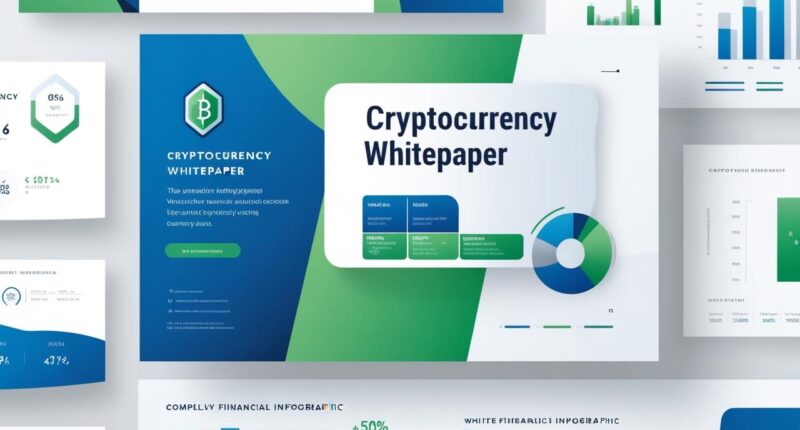A crypto whitepaper is a detailed document that outlines the key aspects of a blockchain project, including its goals, technology, and the backgrounds of the team involved. It is important because it helps establish trust with potential investors and provides necessary information for evaluating the project’s viability. The whitepaper serves as a decision-making tool, assists in community building, and addresses regulatory compliance, ensuring clarity on legal matters. More information on these aspects is available to explore further.
A crypto whitepaper serves as a foundational document for blockchain projects, outlining essential information that guides potential investors and users. It provides detailed insights into project goals, technological innovations, and the expertise of the team involved. By presenting this information clearly, the whitepaper establishes trust and credibility, which is fundamental for attracting investors.
It serves as a benchmark for project progress and accountability, allowing stakeholders to monitor development milestones effectively. Additionally, white papers remain crucial as consumers enjoy researching their industry, enhancing their engagement with the project.
The whitepaper also plays a significant role in enhancing technical understanding. It explains complex blockchain concepts in accessible language, making it easier for readers to grasp the project’s technological advantages. By outlining the project’s consensus mechanisms, network architecture, and tokenomics, it provides a thorough view of the economic model. This information is essential for evaluating technical specifications and future development plans, ensuring that investors have a clear understanding of the project’s potential.
For investors, the whitepaper is an important tool for decision-making. It offers necessary data for conducting due diligence, helping them evaluate project viability and potential returns. By comparing features with existing market solutions, investors can make informed choices. The document outlines token distribution and vesting schedules, as well as a roadmap that details future project milestones.
Community building is another significant aspect of a crypto whitepaper. It attracts early adopters and enthusiasts, facilitating discussions and feedback that shape the project’s direction. This encourages participation in governance and fosters a shared understanding of goals and values among community members.
Furthermore, the whitepaper demonstrates regulatory compliance. It addresses legal requirements, security concerns, and risk factors, outlining measures for user protection and privacy.
Frequently Asked Questions
How Can I Find a Crypto Project’s Whitepaper?
To find a crypto project’s whitepaper, start by visiting the official website, checking the homepage or resources section for a link.
If it’s not visible, look in the footer or documentation pages. Cryptocurrency exchanges often list whitepapers on coin info pages, so explore their research sections.
Additionally, crypto data aggregators like CoinMarketCap may provide whitepaper links.
Finally, community platforms, such as Twitter or Reddit, might share the whitepaper through pinned messages or posts.
Are All Crypto Whitepapers Created Equal in Quality?
Not all crypto whitepapers are created equal in quality. Variations exist in technical depth, clarity, and overall presentation.
High-quality whitepapers offer detailed specifications, clear problem statements, and thorough market analysis, while low-quality versions may make vague promises and lack essential information.
Investors and developers must critically evaluate these documents, as the quality often reflects a project’s legitimacy and viability. A careful assessment can help distinguish reliable projects from those that may be misleading.
What Should I Do if a Whitepaper Is Unclear?
When a whitepaper is unclear, it is essential to seek clarification from the project team by contacting developers or utilizing official community channels.
Asking questions about specific sections or technical terms can provide insight. Additionally, consulting external expert analyses offers valuable perspectives.
Conducting independent research on the technology and team background further aids understanding.
Finally, be vigilant for red flags, such as vague details or unrealistic claims, to guarantee informed decision-making.
Can I Trust a Project Without a Whitepaper?
Trusting a project without a whitepaper can be risky. A whitepaper typically provides transparency about a project’s goals, technical details, and development plans.
Without it, evaluating the project’s legitimacy becomes challenging. Investors should consider alternative evaluation methods, such as reviewing the project’s GitHub activity, examining the team’s background, and analyzing community engagement.
It is essential to remain cautious, as some projects without whitepapers may indicate potential scams or poorly planned initiatives.
How Often Should Whitepapers Be Updated?
Whitepapers should be updated based on project developments, with no fixed timeline for revisions.
Major updates are often triggered by technological advancements or significant regulatory changes.
Typically, projects may revise their whitepapers quarterly or annually, while others choose to update only during essential pivots.
The update process includes a review by the core development team and legal advisors, ensuring community feedback is considered before final approval.
Announcements of updates are communicated through official channels.
References
- https://www.elluminatiinc.com/what-is-crypto-whitepaper/
- https://blog.whitebit.com/en/what-is-a-white-paper-in-crypto/
- https://www.tastycrypto.com/investing/crypto-whitepaper/
- https://blog.bingx.com/blockchain-en/a-guide-to-a-crypto-whitepaper-why-is-it-important/
- https://essentialdata.com/cryptocurrency-white-paper/
- https://www.fdic.gov/system/files/2024-06/2020-request-for-info-standard-setting-3064-za18-c-031.pdf
- https://kriptomat.io/finance-investing/a-beginners-guide-to-analysing-crypto-white-papers-before-buying/
- https://www.berghahnbooks.com/downloads/OpenAccess/ShapiroCrypto/9781805392934.epub
- https://arongroups.co/crypto-articles/what-is-a-whitepaper-in-crypto-and-why-is-it-important-2/
- https://www.proshare.co/articles/checking-crypto-whitepaper-why-is-it-important-best-practices?menu=Technology&classification=Read&category=BlockChain+&+Cryptos









